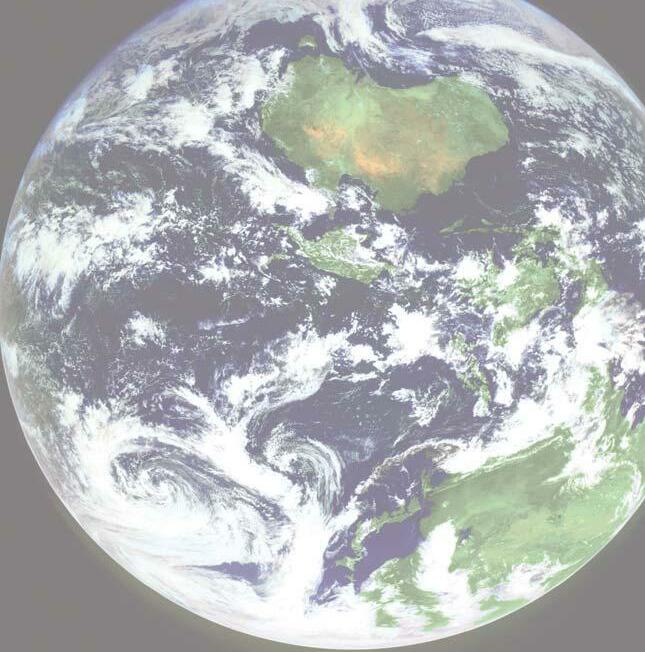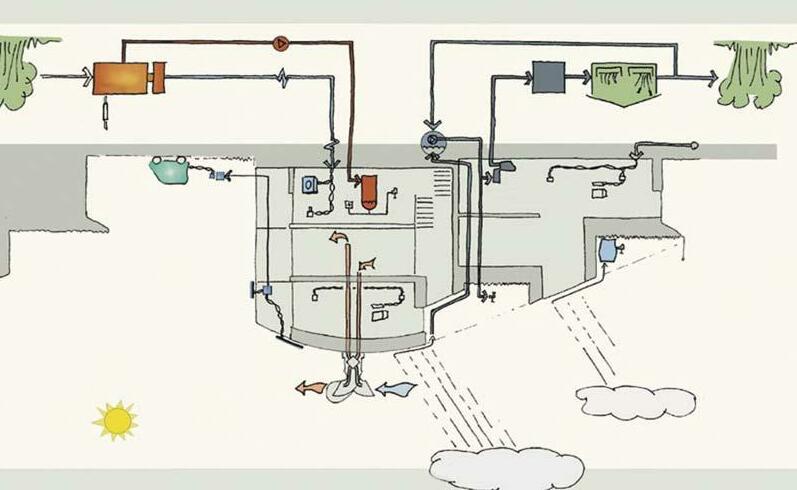9 minute read
Asia-Pacific: Transformation to Sustainability
The Asia-Pacific region wants both to continue to develop its economies and to be competitive with the rest of the world in the short and the long terms. Economic development at the expense of continued depletion or degradation of natural resources and the environment, however, is not sustainable. This list identifies possible options that can reduce the region’s demand on nature and improve development options for the region’s 3.4 billion people. Globally, the countries of Europe and North America must take substantial action to reduce their footprints. Asia-Pacific countries are rightly focused on developing their emerging competitive economies, but they may not succeed without maintaining their ecological assets.
Regional security and global collaboration Effective management of natural resources and reduction of environmental degradation that are transboundary in nature can contribute to ‘regionalization’and improve national security. The progress made in lifting the region’s poor out of poverty needs to recognize the strong links between poverty reduction and environmental quality. Tackling global environmental problems will require greater collaboration between states and that countries in the region take on a greater global leadership role by:
● Increasing efforts to reduce poverty both within low-income countries and economically marginalized areas, especially among the rural poor, by ensuring that the environmental base on which they depend is not depleted. ● Encouraging bilateral and multilateral initiatives through which South–South countries, within and beyond the region, could create a ‘sustainable axis’.
Under such initiatives energy efficiency solutions from one country could go one way, with systems for renewable energy travelling in the other, depending on competitive advantages and sustainable strategies.
● Improving regional natural resource management, for instance through increased and improved regional frameworks, such as the ASEAN
Regional Action Plan on Trade in Wild
Fauna and Flora 2005–2010. This collaboration on policy development and law enforcement could be extended throughout the region and greatly increase the sustainable management of the region’s wildlife trade.
● Ensuring best practice in integrated river basin management supports the needs of people and maintains ecosystem services, as well as biodiversity, and promotes collaboration between countries using a ‘whole of river’ approach to water management.
● Challenging the industrial countries to support ‘leaders’ in sustainability within the region through different means such as public procurement, regulation and cooperation, for example by twinning sustainable cities between North and
South that support a two-way flow of ideas and innovations. ● Using international fora to plan strategies that avoid technological transfers and leapfrog strategies from industrialized countries and multinationals that lead countries in Asia and the Pacific into unsustainable development patterns.
Providing affordable, reliable and environmentally friendly energy to all Environmental imperatives – such as tackling climate change and acid rain –coupled with social and economic factors including increasing fossil fuel prices, import-dependency risks and the provision of affordable energy services to the poor, provide a unique opportunity for a shift to sustainable energy. Factors that could contribute to making this change include:
● Switching the sectoral focus from energy supply to provision of energy services can unlock huge efficiency potential across the region. Much can be learned from existing initiatives – Japan’s economy is already almost three times as energy efficient as that of the United States of
America and almost eight times as efficient as China.
● Internalizing environmental costs using economic instruments – such as sulphur and carbon emissions trading and new regulations such as improved and enforced pollution controls and renewable energy targets – will drive new markets for clean technologies. Asia-Pacific region is already moving forward: China has the world’s most ambitious national renewable energy target, India is the fifth largest generator of wind power in the world while the Philippines is the world’s second largest generator of geothermal energy.
● Advancing innovation and know-how in sustainable energy technologies within the
Asia-Pacific region using public-private partnerships. Such innovation could draw on experience within the region in such countries as China, India and Japan, as well as from the rest of the world.
● New models of participation in energy sector decision making, involving collaboration between consumer organizations, local government, local communities and the private sector, can provide new methods of governance and new business models to support the technology shift.
● Substantial and long-term investment in energy systems that reduce the region’s dependency on expensive fossil fuel imports. This is important both for countries that will struggle to compete on global markets for higher priced fuels and for those, such as India and China, with enormous oil requirements to meet the current and future demand from industry and their growing consumer societies.
Provide accurate and relevant information for decision makers Track all assets (economic, social and environmental) in order to better monitor consequences of present choices. Such options include:
● Strengthening the ability of national
Map 6: LIVING ON LESS, LIVING ON MORE 2001
Countries using more than three times the worldwide average biocapacity available per person Countries using between twice and three times the worldwide average biocapacity available per person Countries using between the entire and twice the worldwide average biocapacity available per person Countries using between half and the entire worldwide average biocapacity available per person Countries using less than half the worldwide average biocapacity available per person Insufficient data
Sustainability means providing well-being for all within the means of nature. Overusing the biosphere undermines its ability to provide resources and support a high quality of life for all of humanity. What does this mean for nations? Should we look at a country’s Ecological Footprint, its ecological deficit, or both? Is Australia ecologically sustainable? Its residents’ footprint is more than four times larger than what is available per person worldwide, but Australia’s biological capacity is about twice its footprint. Is China ecologically sustainable? Its average resident lives on a footprint smaller than what is available per person globally, but China’s total footprint exceeds the biocapacity available within its own borders. If everyone in the world led the same lifestyle as the average Australian, the Earth would not be able to sustain humanity for very long. Nor would humanity be sustainable if all countries ran an ecological deficit like China.
TRANSFORMATION TO SUSTAINABILITY continued
governments and regional institutions to keep track of their demand on and availability of biological capacity.
● Providing a better quality and quantity of information in the media. Governments and companies will not receive appropriate signals from citizens and consumers unless the public is well informed of the impact of their choices and purchasing decisions.
● Broadening the use of labelling and certification standards, for example the
Forest Stewardship Council (FSC) and the
Marine Stewardship Council (MSC), to allow customers to make choices about the products they buy, reduce their individual footprints and support more sustainable resource use.
● Encouraging wide use of corporate social responsibility (CSR) with better corporate environmental reporting to show which companies are making efforts to become sustainable, and how.
● Measuring and reporting on more comprehensive indicators of social, economic and ecological performance in governments to complement existing economic indicators such as GDP, trade balance and rate of inflation. Examples include green GDP in China, and gross domestic happiness in Bhutan. Asia-Pacific region. This concerns particularly large infrastructure projects in rapidly transforming nations, such as China and India, where retro-fitting in the future will be enormously costly and inefficient. But it is also crucially important in other countries including Australia, Japan, New Zealand, the Republic of Korea, and Singapore, where new, green, energy-efficient infrastructure could become an asset, rather than continuing with existing resource-consuming traps. Possibilities include:
● Introducing mechanisms for rating buildings based on building design requirements and materials that lead to reductions in waste generation and energy use, thereby substantially increasing efficiency.
● Upgrading existing hydro-generation capacity in dams, rather than constructing new capacity, in countries such as
Australia, China, India, Japan and New
Zealand. When new dams are built, they should always meet the World Commission on Dams guidelines.
● Encouraging investment in public transport infrastructure, in both urban and rural areas, and making transport pricing reflect the full social and environmental costs of road and air travel.
● Investing in information and communication technologies to allow urban areas to be less dependent on traditional transport systems and to bring the benefits of better access to communications to poorer rural areas. Markets, trade and investment Governments should ensure that investments inthe solutions needed for the transformation to sustainability are encouraged. Investments in industries that are obstacles to sustainability or that produce goods and services incompatible with a sustainable world should also be discouraged, with companies trying to go beyond traditional CSR standards and taking the lead in initiatives for sustainable development. Government measures could include:
● Developing systems that allow countries to differentiate between sustainable and unsustainable trade and investment flows.
Where possible these should link to national sustainable development strategies and indicators such as green GDP.
● Providing incentives for financial markets to favour long-term sustainability over shortterm gains. Commercial banks, pension funds and insurance companies in particular have opportunities to invest in an ecologically responsible manner and divest their interests in unsustainable activities.
● Supporting national fiscal policy initiatives and providing regulatory and fiscal incentives to encourage full-cost pricing and moves towards a lower resourceintense society.
● Inviting the private financial sector and multilateral agencies to support their investment policies that favour sustainable innovations and green technology. For example, the Asia Development Bank and commercial banks could develop loans and investment strategies that encourage transformation and promote sustainability.
Recognize the increasing competitive advantage of ecological creditors Prepare for the geopolitical shift to a division between ecological debtor and creditor countries (see Map 7). International cooperation can be enhanced by encouraging governments to move from short-term selfinterests on common goods to long-term global common interests, including:
● Developing beyond unilateral action on international issues such as climate change, biodiversity conservation or management of the oceans.
● Exploring new international conventions and treaties that build on and develop further the existing commitments of the
Millennium Development Goals, Kyoto and
Doha that encourage equitable solutions to sustainability challenges.
Build and advance green infrastructure Design more resource-efficient, smarter cities; transport networks and infrastructure in the
Map 7: ECOLOGICAL DEBTOR AND CREDITOR COUNTRIES 2001
Ecological Reserve >one third of biocapacity <one third of biocapacity
Ecological Deficit <one third of biocapacity >one third of biocapacity Insufficient data
Countries with ecological deficits use more biocapacity than they control within their own territories. As ecological deficits continue to increase in many countries, the predominant geopolitical line may shift from the current division between developed and developing countries. Instead, the line will fall between ecological debtors, countries that depend on net imports of ecological resources or on liquidating their ecological assets to maintain their economies, and ecological creditors, countries still endowed with ecological reserves. As ecological deficits increase worldwide, both debtors and creditors will realize the significance of ecological assets and recognize the economic advantage of curbing their footprints.




